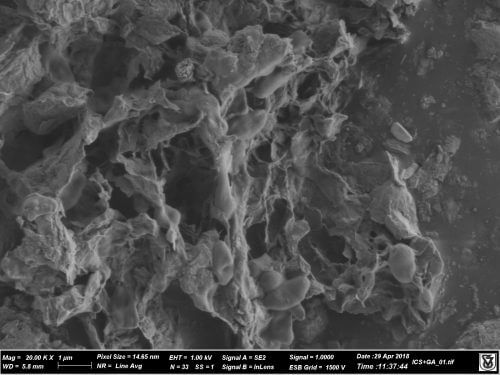The toxic waste water is created mainly in the production processes of adhesives but also in the wood, paper and textile industries. The removal of formaldehyde from water is essential to prevent contamination of ground water and soils


Researchers at the Technion have developed an innovative technology, registered as a patent, to purify water from the toxic substance formaldehyde. The research was led by Dr. Adi Radian and PhD student Yael Zevolonov from the Faculty of Civil and Environmental Engineering and Prof. Eilat Fishman and Dr. Zohar Ben-Barak Zilles from the Faculty of Biotechnology and Food Engineering are partners in it. It was published in the Chemical Engineering Journal.
Formaldehyde, whose chemical formula is CH2O, is a carcinogen that can enter our bodies through breathing, eating and drinking and is considered one of the most problematic indoor pollutants.
The current study focused on the problem of the existence of formaldehyde in water as a result of industrial processes. Formaldehyde is a base for the production of glue and is therefore very common in the wood, paper, textile and other industries, where it accumulates in the water created in the production processes. The discharge of these formaldehyde effluents into the ground and water reservoirs is of course prohibited, therefore many efforts are made to find ways to break down the substance. Since removing it from the water is very expensive, some companies simply keep the contaminated wastewater in barrels until a satisfactory solution is found.
The Technion researchers' development is based on montmorillonite type clay - a natural mineral, one of whose characteristics is a very large surface area; One gram of this clay has a surface area of about 760 square meters. This property gives the clay a rare adsorption capacity. The patent developed at the Technion is based on processing the clay in a way that increases the absorption of formaldehyde.

The other main ingredient in the new technology is a formaldehyde-decomposing bacterium. Such bacteria developed in the Negev following the long-term use of formaldehyde to disinfect the soil. This use led to the development of bacteria resistant to formaldehyde, which know how to break down the dangerous substance. In solving the problem of resistance, the Negev farmer was helped by Prof. Eilat Fishman, who donated the aforementioned bacteria to the current research; And so, the durability attached to the farmers enabled the development of the new technology at the Technion.

However, the researchers had to overcome a difficult technical problem: the high level of formaldehyde in the industrial effluents kills the bacteria introduced into them. Therefore, a protection system was required here that would allow the bacteria to survive and break down the dangerous substance.
The device developed by the Technion researchers is based on processed clay, which has a positive electrical charge, which absorbs the formaldehyde and reduces its concentration. Bacteria that break down the material are pre-attached to the unit. After each round of formaldehyde decomposition the unit cleans itself for another round. According to Dr. Radian, the development may also be relevant for other uses, for example the adsorption and decomposition of pesticides that have been washed away by the rain and threaten to contaminate the groundwater.
The research was supported by the Russell Berry Research Institute in Nanotechnology (RBNI) and the Ministry of Science and Technology.
Dr. Adi Radian, head of the soil chemistry laboratory at the Faculty of Civil and Environmental Engineering, completed her doctorate at the Faculty of Agriculture of the Hebrew University, where she dealt with the adaptation of clay to the adsorption of organic pollutants. She then went on to do a post-doctorate at the University of Minnesota, where she developed gel substrates that attract and fix bacteria that break down pollutants such as fuel and pesticides. In July 2016, Dr. Radian returned to Israel and joined the faculty of the Faculty of Civil and Environmental Engineering at the Technion.
For an article published in the Chemical Engineering Journal.

One response
Cannon! And a genius!
Half the world is destroying the earth and the other half is indifferent. Among them are righteous people who really change him. Good luck and thank you